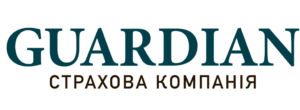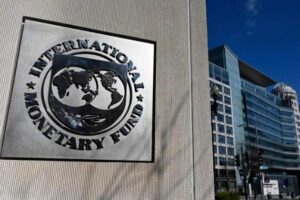
Donald Trump has said that the United States absolutely needs to establish control over Greenland. He already wanted to buy the island during his first presidential term. He wrote about it on the social network Truth Social.
“For the purpose of national security and freedom around the world, the United States of America believes that possession and control of Greenland is an absolute necessity,” he wrote.
The publication reminds that the United States has repeatedly tried to buy Greenland, the world’s largest island that is not a continent, since 1867. Greenland is considered part of the continent of North America, but has close geopolitical ties with Europe and receives funding from the European Union, as it is classified as an overseas territory connected to the bloc through Denmark.
Greenland’s natural resources include gold, silver, copper, and uranium, and the waters off the coast are believed to contain significant oil reserves.
Trump put forward the idea of the US buying Greenland in 2019 during his first presidential term. At the time, Danish Prime Minister Mette Frederiksen rejected the proposal, calling it “absurd.” After that, Trump canceled his trip to Denmark.

According to Worldsteel, in November 2024, steel production increased compared to November 2023 in most of the top ten countries, except for Japan, the United States, Russia and South Korea.
The top ten steel producing countries in November are as follows: China (78.4 million tons, +2.5% by November 2023), India (12.384 million tons, +4.5%), Japan (6.888 million tons, -3.1%), the United States (6.378 million tons, -2.8%), the Russian Federation (5.450 million tons, -9.2%), South Korea (5.190 mln tons, -3.6%), Iran (3.074 mln tons, +0.1%), Turkey (3.011 mln tons, +0.7%), Germany (2.909 mln tons, +8.6%) and Brazil (2.774 mln tons, +1.9%).
Overall, in November this year, steel production increased by 0.8% year-on-year to 146.831 million tons.
For 11 months of 2024, the top ten steel producing countries are as follows: China (929.190 million tons, -2.7%), India (135.932 million tons, +5.9%), Japan (77.102 million tons, -3.6%), the United States (72.879 million tons, -2.2%), the Russian Federation (64.885 million tons, -7%), South Korea (58, 297 million tons, -4.9%), Germany (34.490 million tons, +5.3%), Turkey (33.915 million tons, +11.2%), Brazil (31.168 million tons, +5.6%) and Iran (28.030 million tons, +0.5%).
In total, 71 countries produced 1 billion 694.593 million tons of steel in January-November, down 1.4% from the same period in 2023.
At the same time, Ukraine produced 7.028 million tons of steel in 11 months of 2024, up 23.1% compared to January-November 2023. The country is ranked 20th in the first 11 months of 2014.
As reported, in 2023, China produced 1 billion 19.080 million tons at the level of the previous year), India (140.171 million tons, +11.8%), Japan (86.996 million tons, -2.5%), the United States (80.664 million tons, +0.2%), Russia (75.8 million tons, +5.6%), South Korea (66.676 million tons, +1.3%), Germany (35.438 million tons, -3.9%), Turkey (33.714 million tons, -4%), Brazil (31.869 million tons, -6.5%) and Iran (31.139 million tons, +1.8%).
At the end of 2022, the top ten steel producing countries looked like this: China (1.013 billion tons, -2.1%), India (124.720 million tons, +5.5%), Japan (89.235 million tons, -7.4%), the United States (80.715 million tons, -5.9%), the Russian Federation (71.5 million tons, -7.2%), South Korea (65, 865 million tons, -6.5%), Germany (36.849 million tons, -8.4%), Turkey (35.134 million tons, -12.9%), Brazil (33.972 million tons, -5.8%) and Iran (30.593 million tons, +8%).
In 2022, Ukraine ranked 23rd with the production of 6.263 million tons of steel (-70.7%).

Insurance company “Guardian” (Kiev) in January-November 2024 made insurance indemnities in the amount of UAH 457.5 million, which is 32.8% more than for the same period of 2023, according to the insurer’s website. It is specified that payments on CASCO amounted to UAH 31,7 million, which is 59,1% more than for the same period last year, MTPL – UAH 164,7 million, “Green Card” – UAH 258,05 million (+43,5%), insurance of medical expenses – UAH 0,5 million (+80,5%).
IC “Guardian” is a member of the Presidium of the League of Insurance Organizations of Ukraine. Since January 2020 it has received the status of a full member of the ITSBU, has the right to sell “Green Card” policies.
In October 2020 by the decision of the general meeting of the members of the Nuclear Insurance Pool of Ukraine IC “Guardian” became its member.

DIM commissioned 80.5 thousand square meters in 2024, and plans to commission more than 100 thousand square meters in 2025, the company’s managing partner Oleksandr Nasikovsky told Interfax-Ukraine.
“According to the latest LUN data, 10.7 thousand new apartments were commissioned in Kyiv in 12 months (the first to third quarters of 2024 plus the fourth quarter of 2023). Almost 10% of this figure is DIM’s facilities. In 2024, we commissioned 1191 apartments with a total area of 80,467 sq. m. in three complexes: “New Autograph, Lucky Land and Park Lake City,” he said.
Mr. Nasykovsky also noted that this year the company started construction of a new premium segment complex The One in Kyiv at 7b Mechnikova Street. The 140-apartment complex, according to the concept, will offer the service of a 5-star hotel, 360-degree panoramic views, a closed area with round-the-clock security, underground parking with elevators, a public space of 1400 square meters, two conceptual terraces Front Yard, Secret Garden, and an outdoor pool.
“This is the first residential project in Ukraine with nano water purification and hepa air filtration. We plan to complete the construction of the complex in the second quarter of 2028,” said DIM’s managing partner.
In 2024, DIM successfully attracted targeted financing from domestic strategic investment partners for the development of existing and prospective facilities.
“According to the signed agreement, we are not yet disclosing the amount of investment and the names of Ukrainian investors, but we can say that this shows high confidence in us and confidence in the future of Ukraine. We believe in Ukraine and continue to build six of our complexes: “Metropolis, Park Lake City, Lucky Land, A136 Highlight Tower, Olegiv Boutique Residence and The One,” Nasikovsky emphasized.
Regarding plans for 2025, the managing partner announced the launch of a new premium suburban project (location and brand have not yet been announced), as well as plans to commission a significant amount of housing.
“In 2025, we plan to commission more than 100 thousand square meters: the A136 Highlight Tower complex, building No. 3 of the Metropolis complex, building No. 4 of the Lucky Land eco-complex, and buildings 1.5, 2.1, 2.2, 2.3, 2.4 of the VITA district and buildings 1.1 and 1.3 of the AQUA district in the Park Lake City business class suburban complex,” the expert listed.
Nasikovsky noted that among the trends of the real estate market in 2024, the main one is that consumers have gradually adapted to the challenges of wartime.
“If in 2023, after the rocket attacks on Ukrainian cities, market activity stopped for almost a week, this year we see that the current military operations, although they have a significant impact on the activity of buyers in the market. People have started living here and now and are making plans for the future,” he said.
The expert also noted the significant impact on the real estate market of the government programs “eHouse” and “eRestoration”. According to him, since DIM joined the eHouse program in the spring of this year, about 30% of inquiries to DIM sales offices have been related to this program, of which about 10% have been converted into real transactions. At the beginning of September 2024, the first agreement under the eRestoration state program was concluded in the Lucky Land eco-city.
“Government programs continue to support activity in the residential real estate market today and will continue to do so in 2025. However, the main change in the real estate market in 2024 is the tax changes (increase in the military tax to 5%) introduced at the end of 2024, which will have several important consequences for the residential real estate market,” he said.
Nasikovsky stated that the increase in the military duty will increase the costs of building materials producers, logistics, contractors and other market participants and, as a result, will push up the price per square meter in new buildings. In addition, it will affect the choice of buyers who are now considering housing as an investment tool, they may start looking for alternative options for investing their money.
“However, despite these challenges, we remain optimistic and see that the real estate market continues to gradually adapt and find new opportunities for development,” he summarized.
As for the behavior of those buyers who choose housing for themselves, Nasikovsky observes that in 2024 some of them began to reorient from the secondary market to the new construction market.
“This is facilitated not only by the government programs eHouse and eRecovery, but also by developers’ own financial programs. For example, DIM develops internal lending programs, offers flexible purchase terms and extends installment terms as an alternative to government programs,” he said.
DIM has an installment program of up to 5 years with a down payment of 20%; a program with flexible payment terms, when the buyer pays a down payment of 30% before the completion of construction, and the rest of the amount is paid within two years after the object is ready.
“Also, for the first time in the real estate market, DIM has introduced a financial guarantee program – in the contractual terms between the investor and the company, we have included penalties of 0.03% in favor of the client for each day overdue according to the schedule of the object’s readiness. The program is already in place in A136 Highlight Tower, Olegiv Boutique Residence and Park Lake City. We are working on implementing the guarantee in our other projects,” Nasikovsky said.
As for the requirements of buyers to the facilities, security and energy independence remain in the first place.
“The availability of an access control system, video surveillance, security, and especially underground parking lots or shelters are the main requests of every second buyer. Increasingly, people are paying attention to the energy independence of buildings, the availability of solar panels, generators, uninterruptible power supply systems, heat and water, which ensure the autonomy of buildings,” the expert noted.
At the same time, he emphasized that, just like before the war, future residents pay great attention to the infrastructure inside and around residential complexes, the availability of green areas, modern playgrounds and sports grounds, schools and kindergartens, as well as convenient transportation. People are now more often looking for housing for themselves, so they choose projects with the concept of a “15-minute city.”
“If the active phase of the war continues in 2025, the housing market will not change significantly. However, it is already clear that the cost of new buildings will increase by an average of 15-20%. The reasons for this include changes in taxation, inflation, and rising costs of construction materials. We hope that demand will gradually increase, and government programs will stimulate it,” Nasikovsky summarized.

Ukrainian steelmakers reduced steel production by 0.9% y-o-y in November to 541 thousand tons from 546 thousand tons and by 10.4% y-o-y to 604 thousand tons in the previous month.
At the same time, Ukraine was ranked 24th among 71 countries in the ranking of global producers of these products by the World Steel Association (Worldsteel).
In 11 months of 2024, Ukraine produced 7.028 million tons of steel, up 23.1% from January-November 2023. The country is ranked 20th in the first 11 months of 2014.
At the same time, Ukraine produced 6.228 million tons of steel in 2023, which is 0.6% lower than in 2022. The country was ranked 22nd in 2023.
In 2022, Ukraine ranked 23rd with 6.263 million tons of steel produced (-70.7%).

Ukraine has received $1.1 billion from the IMF, Prime Minister Denys Shmyhal said.
“This is the sixth tranche under a joint program under the EFF Extended Fund Facility,” Shmyhal wrote on his Telegram channel.
According to him, the funds have already been transferred to Ukrainian accounts and will be used to finance critical budget expenditures.
The Prime Minister said that Ukraine has already received $9.8 billion from the IMF under this program.